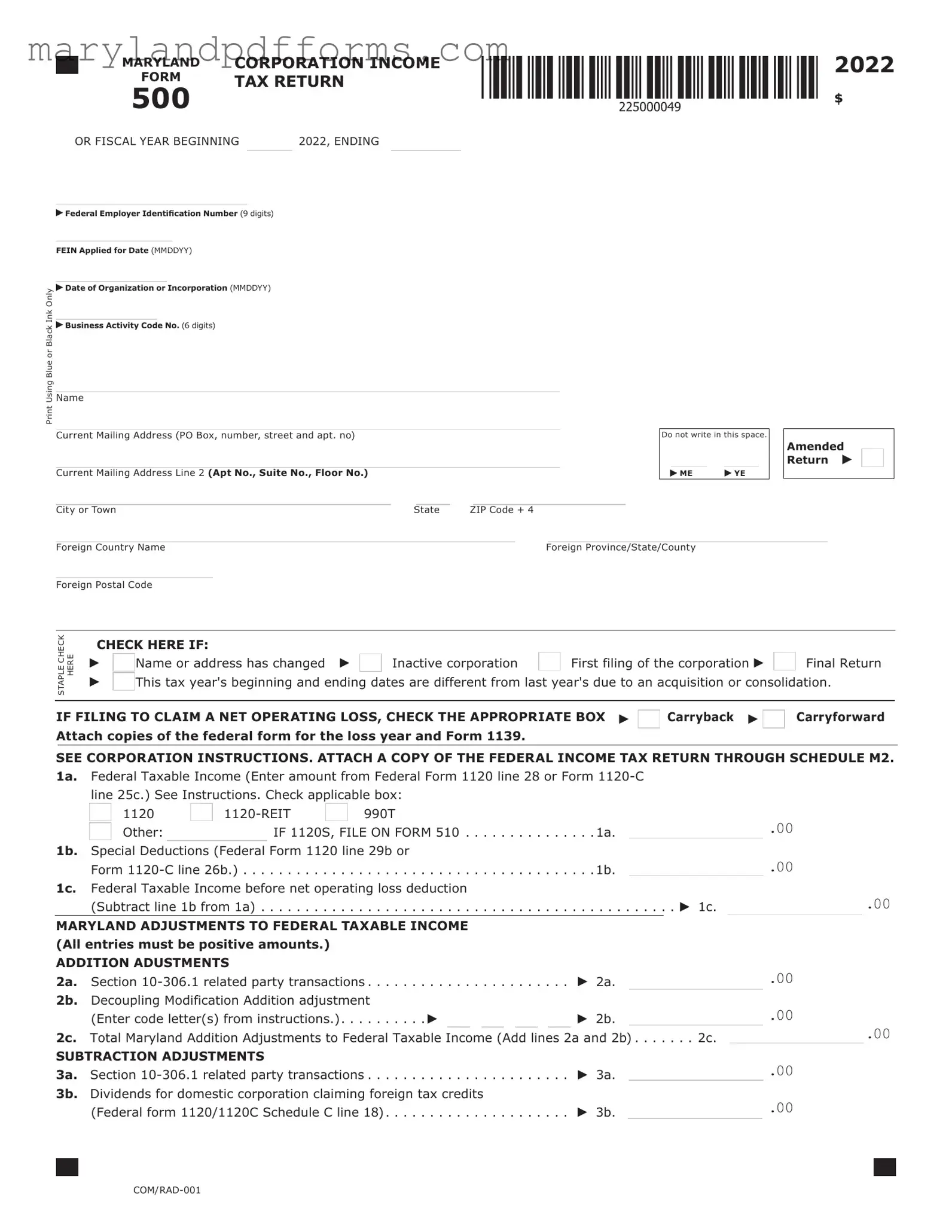The Maryland 500 form is the Corporation Income Tax Return that businesses in Maryland must file annually. It is used to report the corporation's income, deductions, and tax liability for the year. This form is essential for determining how much tax a corporation owes to the state of Maryland based on its federal taxable income and any adjustments specific to Maryland tax laws.
Any corporation that is doing business in Maryland, or has income derived from Maryland sources, is required to file the Maryland 500 form. This includes both domestic and foreign corporations. If your corporation is inactive or has undergone significant changes, such as an acquisition, you may also need to file this form. It's crucial to check your specific circumstances to ensure compliance.
To complete the Maryland 500 form, you will need several pieces of information:
-
Your Federal Employer Identification Number (FEIN).
-
The dates of your corporation's organization or incorporation.
-
Your corporation's business activity code.
-
Your federal taxable income, which can be found on your federal Form 1120.
-
Details about any special deductions or adjustments that apply to your corporation.
-
Information about any net operating losses, if applicable.
Having this information ready will facilitate a smoother filing process.
The Maryland 500 form must be filed electronically. This requirement helps ensure accuracy and efficiency in processing your tax return. You can file through the Maryland Comptroller's website or use approved tax software that supports electronic filing. Be sure to keep copies of your completed form and any supporting documents for your records.
The deadline for filing the Maryland 500 form is typically the 15th day of the fourth month following the end of your corporation's tax year. For most corporations that operate on a calendar year, this means the due date is April 15. If you require more time, you can file for an extension using Form 500E, but remember that this does not extend the time to pay any taxes owed.
If you discover that you made an error on your Maryland 500 form after it has been filed, you can amend your return. To do this, check the box indicating that you are filing an amended return on the form and provide a detailed explanation of the changes. Attach any necessary schedules or documentation that supports your amendments. It’s important to file the amended return as soon as possible to avoid potential penalties or interest on unpaid taxes.
